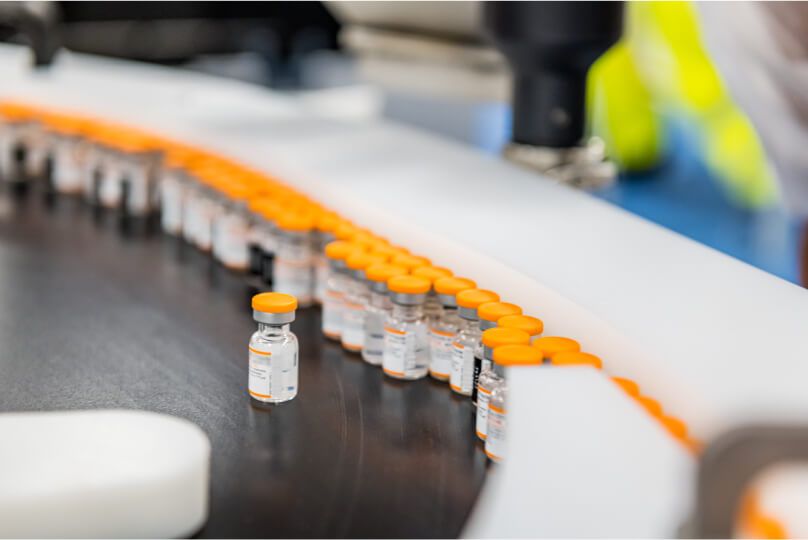Evolving with the Virus
The emergence of the Omicron variant in late 2021 presented a real-world test of the agility and manufacturing speed of mRNA vaccine technology.
In January 2022, a mere two months since the Omicron variant was first identified and sequenced in South Africa,1 we began a Phase 2/3 clinical trial investigating new vaccine candidates based on the Omicron BA.1 variant, which was rapidly outpacing other variants circulating at the time.2
But by the time these vaccines demonstrated positive clinical results, the Omicron BA.4 and BA.5 subvariants had splintered off and gained a foothold. Once again, we leaned on the mRNA platform technology to swiftly create a new vaccine candidate based on these emerging subvariants and began pre-clinical testing.
"This updated booster - delivered at the speed of science - is a testament not only to the power of the mRNA platform technology but also to the tireless dedication of all the people at Pfizer who have made these feats possible"
Having established a global manufacturing and supply chain network demonstrably adept at ramping up novel vaccine production to meet worldwide demand, we were ready to move forward with vaccines targeting either BA.1 or BA.4/BA.5 variants.
The Food and Drug Administration (FDA) and European Medicines Agency (EMA) convened in June 2022 to discuss the best approach to combatting the evolving virus. Ultimately, we submitted applications to the FDA and EMA based on the clinical data we collected for our BA.1-adapted vaccine as well as the pre-clinical and manufacturing data from our BA.4/BA.5-adapted vaccine.
In August, our BA.4/BA.5-adapted bivalent vaccine was authorized by the FDA as a booster dose for ages 12 years and older. The EU followed suit with two bivalent vaccines in September – for Omicron BA.1 and Omicron BA.4/BA.5. This updated booster was authorized in the U.S. for anyone 5 years of age or older in October and throughout the EU for anyone 5 years of age and older in November.
On December 8, we announced another booster milestone. The Omicron BA.4/BA.5-adapted bivalent COVID-19 vaccine received FDA authorization as the third 3-μg dose in the three- dose primary series for children 6 months through 4 years of age.
“This updated booster – delivered at the speed of science – is a testament not only to the power of the mRNA platform technology but also to the tireless dedication of all the people at Pfizer who have made these feats possible,” said Dr. Albert Bourla, Pfizer Chairman & Chief Executive Officer.
Emergency uses of the vaccines have not been approved or licensed by FDA but have been authorized by FDA under an Emergency Use Authorization (EUA) to prevent Coronavirus Disease 2019 (COVID-19) in individuals aged 6 months and older. The emergency uses are only authorized for the duration of the declaration that circumstances exist justifying the authorization of emergency use of the medical product under Section 564(b)(1) of the FD&C Act unless the declaration is terminated or authorization revoked sooner.
- Viana, R., Moyo, S., Amoako, D.G. et al. Rapid epidemic expansion of the SARS-CoV-2 Omicron variant in southern Africa. Nature 603, 679–686 (2022). https://doi.org/10.1038/s41586-022-04411-y
- World Health Organization. Two years on, we could be entering a new phase in the pandemic with plausible hope for stabilization, yet too early to drop our guard. https://www.who.int/europe/news/item/24-01-2022-two-years-on-we-could-be-entering-a-new-phase-in-the-pandemic-with-plausible-hope-for-stabilization-yet-too-early-to-drop-our-guard


